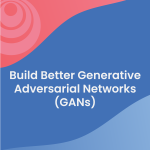This course focuses on data exploration, feature creation, and feature selection for time sequences. The topics discussed include binning, smoothing, transformations, and data set operations for time series, spectral analysis, singular spectrum analysis, distance measures, and motif analysis. In this course you learn to perform motif analysis and implement analyses in the … [Read more...] about Creating Features for Time Series Data
Data Science
BigQuery Soccer Data Analysis
This is a self-paced lab that takes place in the Google Cloud console. Learn the fundamentals of writing and executing queries to query soccer data stored in BigQuery tables. In this lab you will learn more fundamentals of sports data science by writing and executing queries to query data stored in BigQuery tables. The emphasis of the lab is to illustrate how the database … [Read more...] about BigQuery Soccer Data Analysis
Random Models, Nested and Split-plot Designs
Many experiments involve factors whose levels are chosen at random. A well-know situation is the study of measurement systems to determine their capability. This course presents the design and analysis of these types of experiments, including modern methods for estimating the components of variability in these systems. The course also covers experiments with nested factors, … [Read more...] about Random Models, Nested and Split-plot Designs
Introduction to Computer Vision and Image Processing
Computer Vision is one of the most exciting fields in Machine Learning and AI. It has applications in many industries, such as self-driving cars, robotics, augmented reality, and much more. In this beginner-friendly course, you will understand computer vision and learn about its various applications across many industries. As part of this course, you will utilize Python, … [Read more...] about Introduction to Computer Vision and Image Processing
Build Better Generative Adversarial Networks (GANs)
In this course, you will: - Assess the challenges of evaluating GANs and compare different generative models - Use the Fréchet Inception Distance (FID) method to evaluate the fidelity and diversity of GANs - Identify sources of bias and the ways to detect it in GANs - Learn and implement the techniques associated with the state-of-the-art StyleGANs The DeepLearning.AI … [Read more...] about Build Better Generative Adversarial Networks (GANs)






